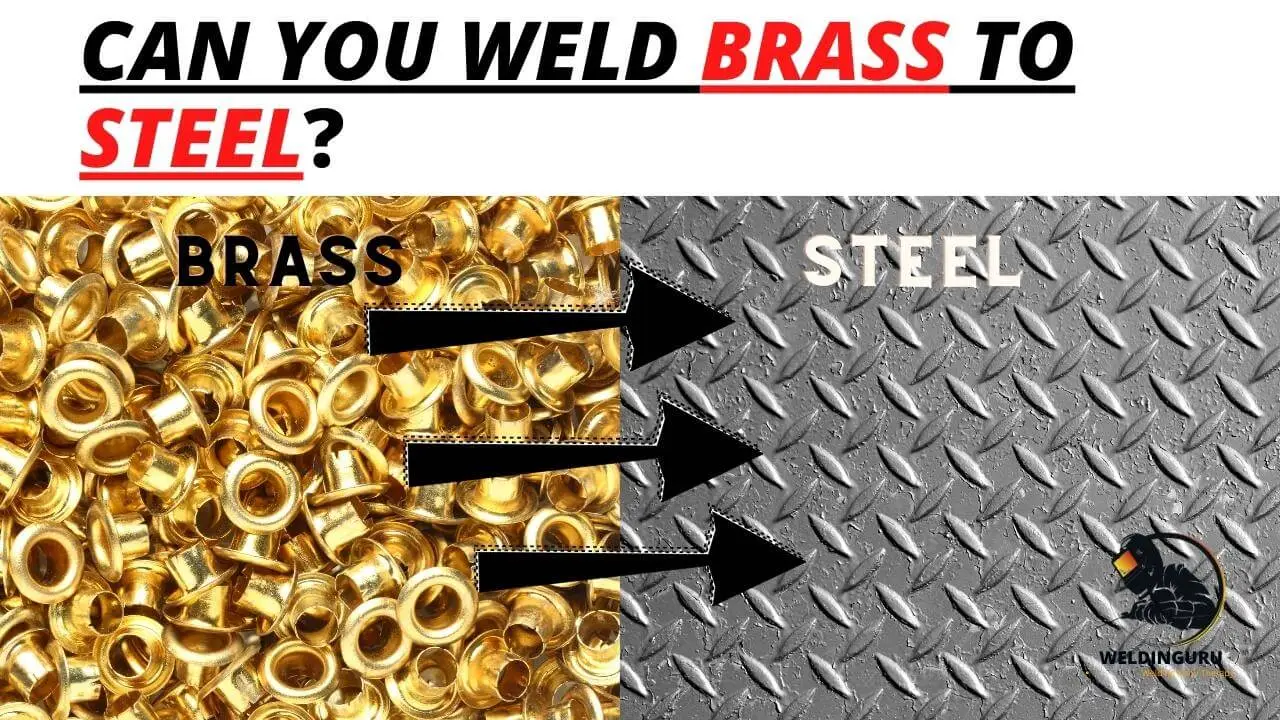If you are one of those who want to learn if can you weld brass to steel, you need to read the article. Brass is a metal alloy that is resistant to corrosion and a fair amount of heat. Therefore, it is used in electronics and other applications.
If you don’t handle the right situation, you’re going to mess up! Luckily, it’s my job to train welders like you who are serious about improving their skills.
This article will teach you about the strengths and weaknesses of brass, what properties make it suitable or unsuitable for different welding processes, and how to weld brass to steel correctly.
Can You Weld Brass To Steel?
Yes, you can weld brass to steel. The two metals have different melting points, and brass has a lower melting point than steel, so it will melt before the steel does. The result will be a welded product made from the combination of the two materials. Results are quite challenging, but it is possible to weld brass to steel.
However, their melting points are different. Brass melts at a temperature of 900 to 950°F, while steel melts at 2,600 °F.
Brass and steel are both alloys, which means they’re made of a mix of two or more metals. Brass is made from copper and zinc, while steel is made from iron and carbon.
Both materials can be melted down and reformed into new shapes with the help of a welding machine, but there are some things you need to know before you get started. I will discuss these in the remaining article, so keep reading!
How Many Ways to Weld Brass to Steel?
1. Brazing:
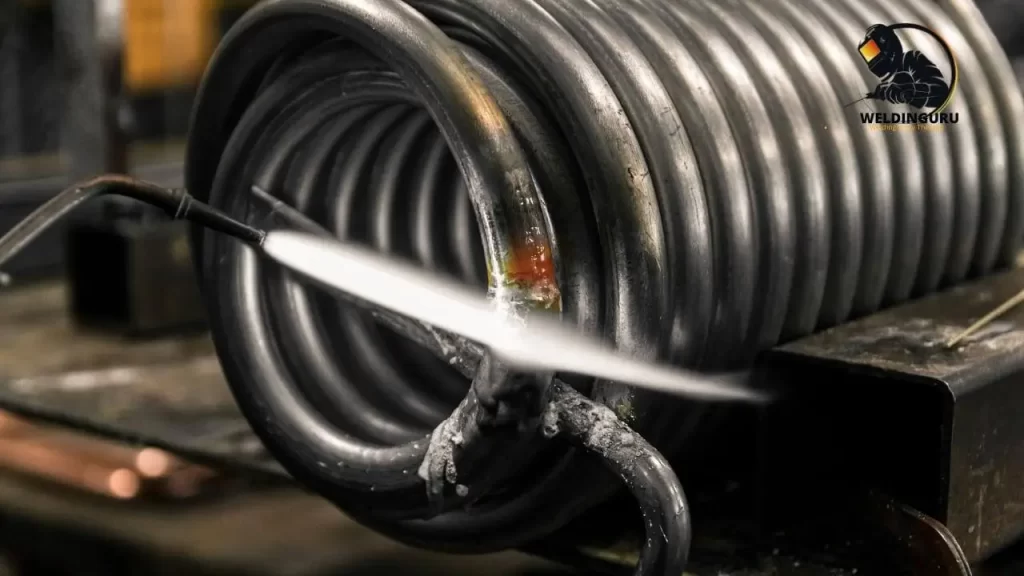
Brazing is a method of joining two pieces of metal by melting a filler material between them. This filler material melts at lower temperatures than the base materials, so it can be used to fill in gaps and make a strong joint.
Brazing is typically used for high-strength joints that require minimal distortion and high strength-to-weight ratios.
It’s often used when you’re welding brass to steel because it creates joints that are strong enough for most purposes but not as strong as other methods like welding or soldering.
One of the main benefits of brazing is that it’s relatively inexpensive compared with other methods and can be done at home with simple tools (like an acetylene torch).
You can also use brass and stainless steel brazing rods to make your own custom alloys for specific uses.
For example, if you want a stronger joint, then stainless steel would allow you without sacrificing too much weight. You’ll need some basic equipment (such as fluxes), but there are plenty of online tutorials that will help you get started on this project if you’re interested!
2. Soldering:
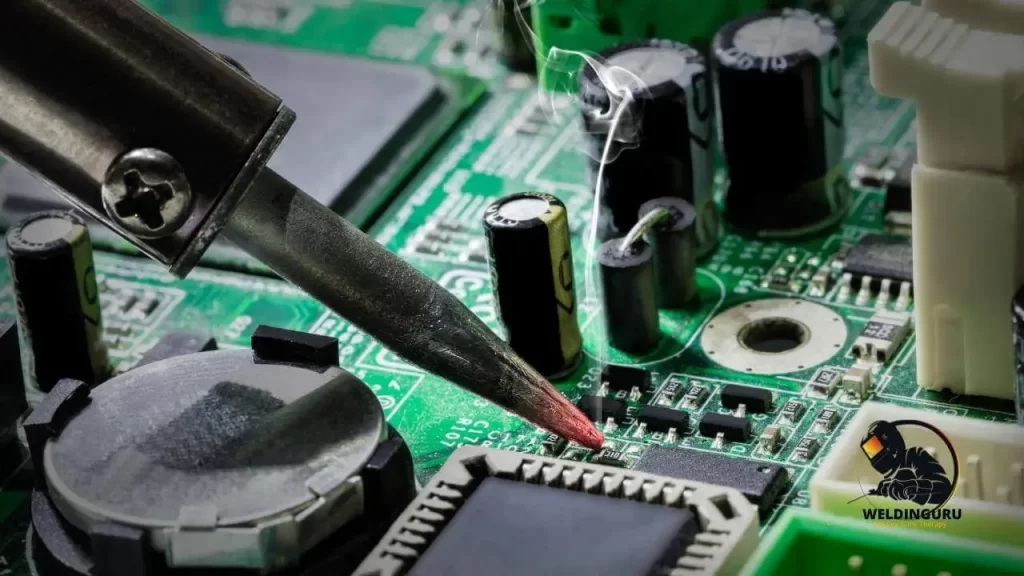
Joining together two pieces of metal by melting a filler metal into their joint is called soldering. When the filler metal and base metal are heated, the filler metal melts at a lower temperature than the base metal. It flows into the joint between them and forms a solid bond.
Soldering is often used for electrical connections because solders have low melting points and are easy to melt with an electric soldering iron. They also can be applied quickly and don’t require flux (which is used to prevent oxidation).
A solder’s melting point depends on its composition: Tin-lead solders melt around 360°F (182°C), while rosin solders melt at about 500°F (260°C).
Can You Mig Weld Brass To Steel?
Yes, you can MIG weld brass to steel.
The reason why you can MIG weld brass to steel is because of the composition of the metals. Brass contains copper, while steel is an alloy that contains iron and carbon.
Because both metals have high thermal conductivity values, they will be able to heat up quickly and evenly when they are being welded together.
Additionally, both brass and steel are easily workable materials, so they will deform easily in the welding process. This means that there will be no need for filler metal or other additives in order for them to bond together properly.
Can you Weld Brass to Stainless Steel?
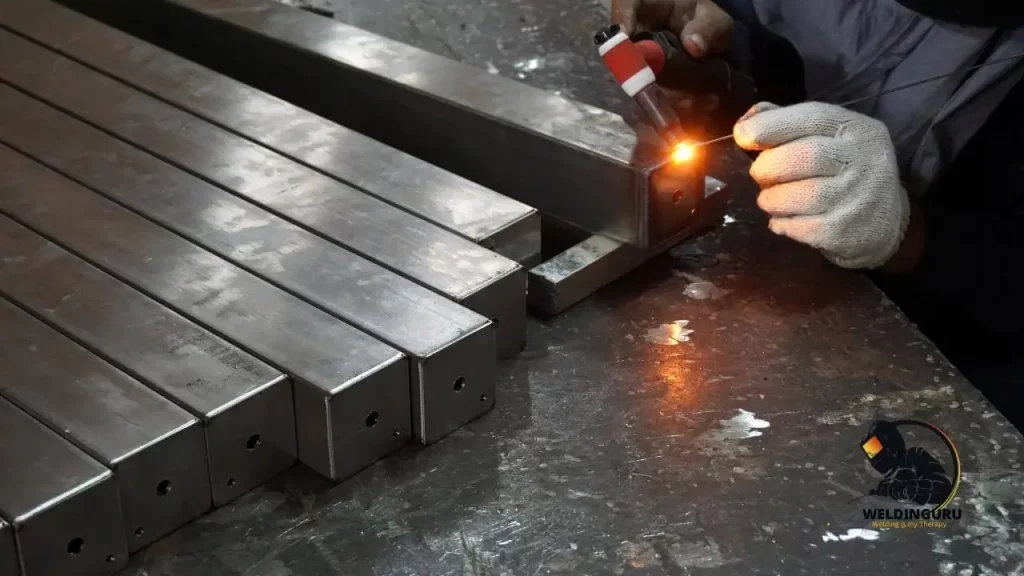
Yes, you can weld brass to stainless steel. For this application, however, you must use a special type of solder designed specifically for these types of metals.
If you were to use regular solder, it would not hold up to the pressure of being in a marine environment and may corrode or become brittle over time.
I recommend using an SSF-6 silver simple rod or brazing rod for the purpose of welding brass to stainless steel.
Steps of Brazing Brass to Steel
- Clean the steel and brass surfaces to be joined with a wire brush or abrasive cloth.
- Apply flux to both surfaces and let it sit for a few minutes to penetrate the pores of the metal.
- Cover the work area with newspaper, or use a firebrick as a base for your work area if possible.
- Place the pieces on top of each other so that they are touching at all points (if possible).
- Apply a small amount of brazing rod (or filler rod) to one side of your joint and place the torch tip against the filler rod that you have just applied, but not too close to avoid melting it prematurely. This will cause an incomplete joint when finished!
- Once you have applied enough heat and melted all three layers together into one solid piece, you can stop applying heat because this will cause cracking in your joint if left too long. Be sure to check periodically throughout the process!
Steps of Soldering Brass to Steel
- Clean the surfaces of both brass and steel with a wire brush or abrasive cloth. Make sure that neither surface has oil or grease on it.
- Apply flux to both surfaces, then wipe off any excess from the surface of the brass by rubbing it with a wet cloth.
- Heat the brass with a torch until it is red-hot, then paint it with solder paste (a mixture of solder powder and flux). The solder paste should be applied in a thin layer over the entire surface of the brass component and allowed to dry before soldering.
- Heat the steel component until it glows red-hot, then apply flux to its surface and hold it in place on top of the brass component while still hot so that they form an even joint between them when cooled down again afterward!
Is it Possible to Weld Brass with Flux Core?
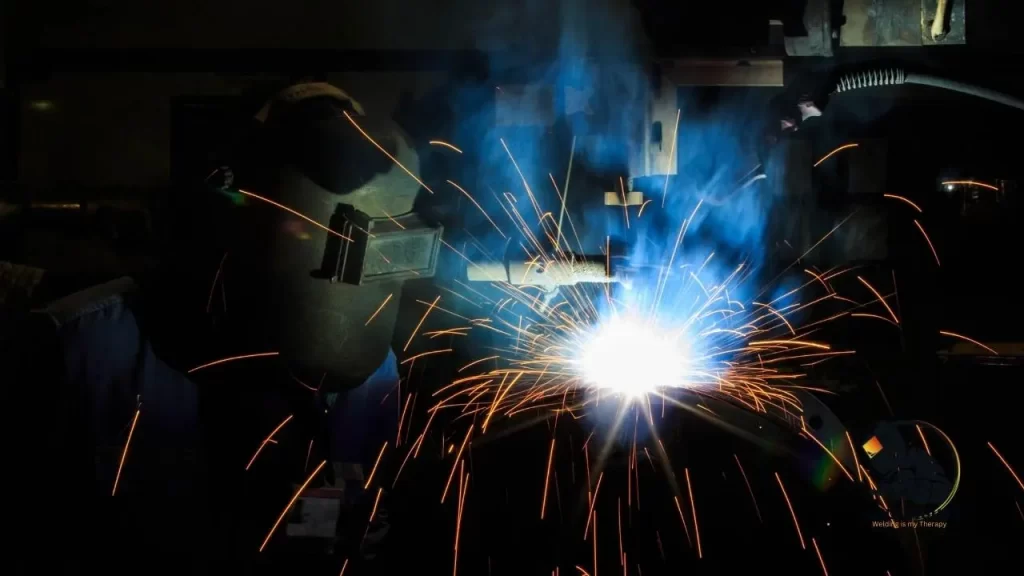
The answer is yes. The process is a bit different than with a steel or stainless steel, but it can be done.
Brass is an alloy of copper and zinc, so the way you go about welding depends on how much zinc is in the alloy. If there’s more than 50% zinc, then you need to use a special flux core wire designed specifically for welding brass.
If the brass contains less than 50% zinc, then you can use normal flux core wire (the same kind you’d use for steel). However, this method takes longer because the heat has to be applied for a longer period of time before the metal starts melting.
Required Current for Welding Brass with TIG & MIG
The required current for welding brass with TIG and MIG will vary by the thickness of the metal being welded. For thinner pieces, a higher current will be needed to heat up the metal faster and melt the filler wire.
For thicker pieces, though, a lower current will be needed to prevent burning through the material too quickly.
When welding thin pieces of brass (less than 1/8″), you’ll need a current of no less than 180 amps. This is because there’s not enough mass in such thin pieces to absorb much heat or energy; without enough power, they’ll burn right through in no time at all.
For thicker pieces (1/8″ or more), try using a current no higher than 120 amps: this should provide plenty of power for heating up the metal without burning through it too quickly.
Important Tips for Welding Brass to Steel
Brass is a metal alloy that is composed of copper and zinc. It is widely used in plumbing products and instruments, as well as in other industries.
Steel is a strong metal that is used to make various types of machinery. When brass is welded to steel, it can increase the strength of the material. If you are planning on welding brass to steel, there are several important tips to keep in mind:
First, make sure that both pieces of material are clean before starting the process. Any dirt or grease will reduce the quality of your weld and cause it to break apart more easily after it has been finished.
You should also make sure that both pieces are free from any rust or corrosion before beginning work on them. Any rust or corrosion will weaken the steel or brass further when they are heated during the process.
When heating both pieces with an oxy-acetylene torch, be careful not to overheat them. If you do so, then this may result in cracks forming around where you’ve already made contact between them.
Also See: Using Nitrogen For Welding
Precautions to Follow When Welding
Welding brass to steel is a very common practice, particularly in the construction and manufacturing industries. However, it can be complicated and dangerous if you don’t follow these precautions:
- Wear protective eyewear when welding brass to steel. The metal will get hot enough to melt and drip onto your face.
- Don’t use the same torch for welding brass and steel together as you would use for other metals. You want to use a special torch that’s designed for welding brass because otherwise, it could cause damage to the surface of the brass.
- Use a flux when you are welding brass to steel, which will help prevent oxidation from occurring during the process.
- Be sure to use the appropriate filler rod that’s recommended by your manufacturer. If you use the wrong type of filler rod, it could cause problems with your welds.
- Use a filler rod that is made from a material that is harder than brass but softer than steel. This will act as an intermediary between the two metals, allowing them to fuse together without melting either one.
Final Words!
Can you weld brass to steel? Based on the information provided, there are multiple variables to consider when welding brass and steel together.
To weld the two materials together, you need to be aware of the differences in strength between the two types of material, how to properly fit the parts together, and what type of welding method will be most suitable for your project.
I personally recommend going for MIG or TIG whenever you want to weld brass to steel. Not only this, you should have to follow this article’s guidelines & must-have welding skill practice.
FAQs:
How do you bond brass to steel?
Instant adhesive, also known as cyanoacrylate or super glue, is the best method for metal-to-metal bonding. Bonding brass or bronze to iron or steel can be tricky and time-consuming. You can use miniatures wax and commercial products such as JB Weld, but we have found that instant adhesive works best for a permanent bond.
Can brass be MIG welded to steel?
Many people believe that brass is best for certain situations and applications where it is used. However, brass can also be MIG welded to steel. As long as both pieces are clean and free of debris and grease or oil, then it can most definitely be MIG welded together.
Does welding stick to brass?
It depends on what you are welding. Welding does stick to brass, but it will not stick as well as to a different metal. This can result in many issues because the metal may not be strong enough to hold the weld together, or it may have cracks from being stretched or bent too much.
